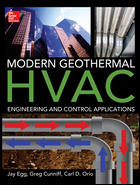The new “R” Building’s three-story classroom wing and two-story office wing will become the largest building on BCC's campus, with more than 29 classrooms and faculty/staff offices.
The 68,000-sq-ft, L-shaped structure will also provide meeting rooms, common areas for informal study and social interaction, and a dance studio.
"The R Building is designed not only to provide a quality learning environment but also to be kind to the natural environment," said John Carroll, BCC's Director of Campus Operations. "We are especially grateful to the City of Bellevue for their willingness to consider new ways to meet these goals."
According to the college, in addition to waterless urinals and the geothermal system, the R Building's advanced conservation features include natural lighting and natural ventilation, recycled and environmentally neutral materials, and a storm drainage system that helps to preserve water quality.
Waterless Urinals
Waterless urinals were originally developed from fixtures developed for marine applications according to the report from the BCC. Waterless urinals rely on gravity and a chemical seal working to save water, improve hygiene, and reduce maintenance costs, the report added. These fixtures, in combination with electronic faucets, are expected to cut water use in the building by approximately one-half, saving 137,000 gal/yr compared to conventional fixtures, according to the college.
GEOTHERMAL HEATING AND COOLING
The college says, the R Building's geothermal heating/cooling system works by circulating water through a grid of 97 wells installed below the main entry plaza. Each well reaches down 300 ft, to a depth where the earth's temperature is a constant 57¿F, according to the college. When the building needs to be cooled, the circulated water absorbs heat from the building and sheds it through the underground wells, and when the building needs to be heated, cold water from the building picks up warmth from the ground, says the BCC. Heat pumps in various sections of the building distribute the heating and cooling energy according to the needs of each space. The college says the geothermal system is expected to reduce energy costs by 30% or more (compared to a conventional variable-air-volume system) and the reduction will save approximately 800,000 cu ft of natural gas annually, while minimizing emissions of carbon dioxide, a greenhouse gas.Publication date: 10/15/2001






